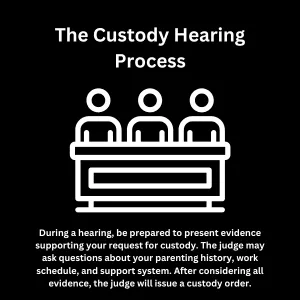Are you wondering, “How do I file for custody of my child?” Few challenges in life are as emotionally taxing as determining who will have custody of your child after a relationship ends.
The uncertainty can be daunting. Will you be awarded child custody? How will the court decide what’s best for your child’s well-being? What steps do you need to take to protect your connectionwith your child?
Montana’s family court system includes particular protocols that must be followed when filing for child custody. Understanding these processes can make a huge impact in your custody case.
Understanding Child Custody in Montana
Child custody is more than just a legal word; it reflects your rights and duties to your child. In Montana, custody decides who makes critical decisions for your child’s life and where they will live.
Legal custody is the right to make important decisions concerning your child’s education, healthcare, and religious upbringing. Physical custody dictates where your child will live and how they are cared for on a daily basis.
Montana courts recognize both single and joint custody arrangements. Sole custody grants one parent main rights, but joint custody encourages both parents to share responsibilities as co-parents.
Why Filing for Custody Is Important in Montana

Without a formal child custody order, disagreements between parents can quickly turn into heated arguments. These disagreements have a bad impact on your child’s emotional well-being and cause unnecessary stress in their lives, especially when there are no documents or paperwork clearly stating who has been awarded custody.
A court order establishes explicit guidelines that both parties must obey. This legal structure preserves your parenting rights as long as the court has proper jurisdiction over the matter when you file.
Montana law strongly suggests you establish formal child custody cases. Circumstances change, and having legal documentation protects you and your child, so it’s wise to consult a lawyer who can guide you through the paperwork and filing process.
Step-by-Step Guide on Filing for Custody in Montana
Step 1: Research and Preparation
Before you submit any paperwork, consider what child custody arrangement is best for your child’s wellbeing. Consider their daily schedule, educational requirements, and emotional system, and gather all necessary documents before you file.
Montana courts make child custody decisions based mostly on the child’s best interests. The child’s bond with each parent, the stability of each home, and the child’s wishes (if they are old enough to express them) are all factors to consider—similar to how many states handle custody under proper jurisdiction.
Financial preparedness is another critical consideration. You will be required to pay filing fees and potentially legal fees, so plan accordingly or look into fee waiver possibilities if you qualify, and consult a lawyer if you’re unsure about any part of the process.
Step 2: Filing the Petition for Custody
To commence the child custody proceedings, you must file a petition with the district court in the Montana county where your kid has lived for at least six months. This sets the appropriate jurisdiction for your case, and as in many states, filing in the wrong county can be a costly mistake.
The petition should explicitly state the sort of custody you seek and explain why this arrangement is in your child’s best interests. Many court clerks can supply the necessary forms, but they cannot give legal advice or talk through legal strategy—that’s something a lawyer can assist with to ensure your paperwork aligns with court rules.
Court clerks can help direct you to the correct forms for your jurisdiction. However, even if you and the other parent have an agreement, it’s best to consult a lawyer to make sure the terms meet Montana’s legal standards before you file.
Step 3: Serving Papers to the Other Parent
After filing, you must legally notify the other guardian or parent by serving them with copies of your petition and summons. This formal notification gives them the opportunity to respond to your custody request, and failure to follow this rule properly can lead to delays or even dismissal of your case—a mistake best avoided by consulting a lawyer before you file.
Montana law requires proper service of process, which can be accomplished through certified mail, a sheriff’s deputy, court clerks, or a professional server. While a clerk can provide guidance on process, they cannot give legal advice or talk you through the specifics like a lawyer can, especially if your case involves a pending divorce or related matters.
If they have threatened you or if there’s a history of domestic violence or child abuse, inform your attorney and the court immediately. Special service arrangements can be made to protect your safety, and your lawyer can ensure those requests follow the proper legal rule for such situations.
Step 4: Mediation vs. Court Hearings
Montana family courts typically encourage parents to resolve child custody case through mediation before proceeding to a formal hearing. This allows both parties to work with a neutral third person to reach an agreement.
Mediation often results in more satisfactory outcomes because parents maintain control over the child custody arrangement rather than having a judge decide. It’s also generally less expensive and less adversarial than a court battle.
If this fails or isn’t appropriate due to circumstances like drug abuse or domestic violence, your case will proceed to a court hearing where a Montana judge will rule on custody matters.
Choosing the Right Type of Custody for Your Montana Family

Joint physical custody works well when both parents live in close proximity and can maintain a consistent schedule for the child.
Sole physical custody with visitation rights might be more practical when parents live far apart or when one parent travels frequently for work. Montana courts recognize that various arrangements can serve a young one’s best interests.
When considering legal custody, think about how well you and the other communicate. Joint legal custody requires parents to cooperate on major decisions about the schooling, healthcare, and religious upbringing.
Do You Need a Lawyer for Your Montana Custody Case?
While you can represent yourself in a custody case, having legal counsel helps you navigate family court, especially when you’re about to file key documents. An attorney can advocate for your parental law rights and ensure you’re ready.
If the other parent has a lawyer, proceeding alone can be a serious mistake. It can hurt your chances, especially if you’re unsure how to file or respond to motions.
Many Montana attorneys offer free consultations to help you decide whether to file full representation or just get help with paperwork and forms.
Special Considerations in Montana Custody Cases
Montana courts take allegations of abuse or domestic violence very seriously. If these issues are present in your case, file documentation from law enforcement, medical providers, or child protective services may be crucial evidence files .
Substance abuse problems can significantly impact decisions. Courts may order drug testing or impose supervision requirements to ensure the child’s safety.
If you’re concerned about these issues, discuss them with your attorney immediately rather than making public accusations that could backfire if unsubstantiated.
The Custody Hearing Process

During a hearing, be prepared to present forms supporting your file for custody. This might include testimony about your involvement with your young one, your home environment, and your ability to support their schooling and activities.
The judge may ask questions about your parenting history, work schedule, and reliability. Answer honestly and focus on how your proposed arrangement benefits your child rather than criticizing the other parent.
After considering all the forms, the judge will file a custody order detailing physical and legal custody arrangements, visitation schedules, and child obligations.
Common Mistakes to Avoid When Filing for Custody
One of the biggest mistakes parents make is letting emotions drive their decisions. Focus on your young one’s welfare rather than “winning” against the other party, and if needed, talk to a lawyer before you file anything—especially if a divorce is involved.
Disregarding family court procedures or deadlines can seriously harm your case. Follow all instructions carefully, submit file documents and forms on time, and appear for all scheduled court dates to avoid making a costly mistake that could affect the outcome.
Speaking negatively about the other parent in front of your child or on social media can damage your custody evaluation. Judges look favorably on parents who encourage positive relationships with the other parent, which your lawyer can also emphasize.
When Fathers File for Custody in Montana

Montana courts do not automatically favor mothers in decisions. The law requires judges and court clerks to evaluate each parent, and assuming otherwise is a common mistake that can discourage fathers from exercising their rights.
Fathers who have been actively involved in their offspring’s life have every right to seek custody. Document your participation in your child’s education, healthcare, and daily activities, and be sure to use the proper forms when you file—your lawyer can help ensure everything is completed correctly.
If you’re an unmarried father, you may need to establish paternity legally before filing for custody if it hasn’t already been established. A lawyer can guide you through this and help avoid procedural mistakes that could delay your case.
Modifying an Existing Custody Order
Life circumstances change, and sometimes custody arrangements need to be modified. Significant changes like relocation, remarriage, or changes in a parent’s ability to care for the child may warrant revisiting the custody order, but failing to file properly can lead to a costly mistake.
To modify an existing form, you must file a petition demonstrating a substantial change in circumstances that affects the young one’s best interests. The burden of proof lies with the parent requesting the modification, so ensuring your paperwork is accurate and complete is essential.
Montana courts are reluctant to disrupt stable custody arrangements without compelling reasons, so be prepared to show how the proposed changes would benefit your child. Filing without proper documentation or legal clarity is a mistake that could delay or weaken your case.
Conclusion
Filing for custody of your child in Montana requires careful preparation, attention to legal procedures, and focus on your child’s best interests.
Courts look favorably on parents who demonstrate a willingness to cooperate for their child’s benefit.
If you’re considering filing for custody, speak with a Montana family law attorney who can provide guidance specific to your situation. With proper legal agreements and a child-centered approach, you can work toward an arrangement that provides stability and supports your child’s development.









